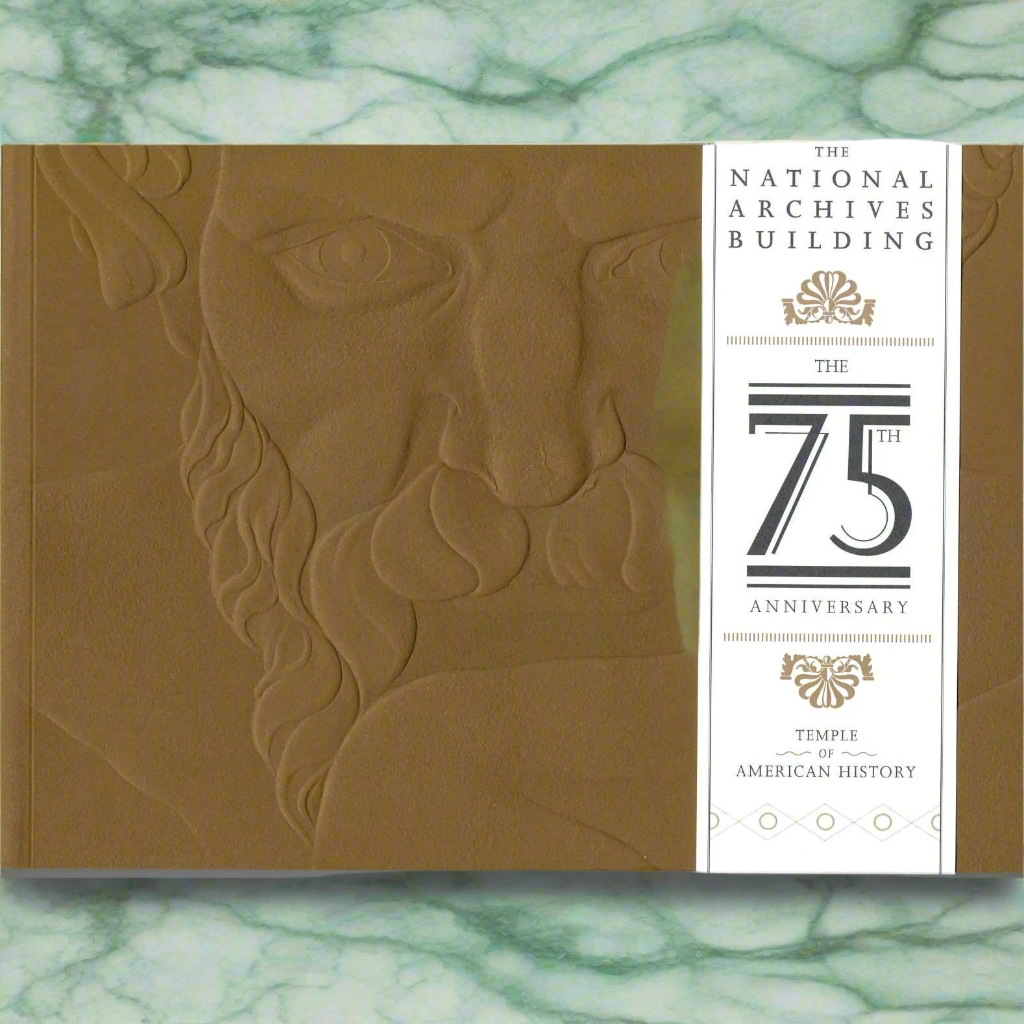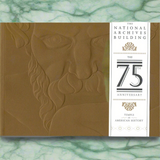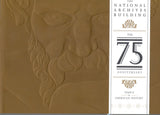


The National Archives Building: Temple of American History
- Written by Patty Reinert Mason
- Foreword by Acting Archivist of the United States Adrienne Thomas
- Paperback: 126 pages
- This item is a clearance item and not returnable, and not eligible for further discounts unless explicitly mentioned in promotional offers
-
The National Archives Building: Temple of American History is a lay person's guide to the National Archives Building, explaining its history, architectural features, and the symbolism of its ornate sculptures. Filled with historical photographs and architectural drawings from the Archives' holdings, as well as contemporary photographs by Carol M. Highsmith and Colin Winterbottom, the book celebrates architect John Russell Pope's masterwork and traces the history of the Archives from its inception.
-
The National Archives was established in 1934 by President Franklin Roosevelt, but its major holdings date back to 1775. They capture the sweep of the past: slave ship manifests and the Emancipation Proclamation; captured German records and the Japanese surrender documents from World War II; journals of polar expeditions and photographs of Dust Bowl farmers; Indian treaties making transitory promises; and a richly bound document bearing the bold signature "Bonaparte"—the Louisiana Purchase Treaty that doubled the territory of the young republic.
The National Archives keeps only those Federal records that are judged to have continuing value—about 2 to 5 percent of those generated in any given year. By now, they add up to a formidable number, diverse in form as well as in content. There are approximately 10 billion pages of textual records; 12 million maps, charts, and architectural and engineering drawings; 25 million still photographs and graphics; 24 million aerial photographs; 300,000 reels of motion picture film; 400,000 video and sound recordings; and 133 terabytes of electronic data. All these materials are preserved because they are important to the workings of government, have long-term research worth, or provide information of value to citizens.